Caryn’s Thoughts
 Thankfully, the NASA space program hasn’t had a great number of losses, but that doesn’t make any loss less devastating that any of the others. On February 1, 2003, just a little over 17 years after the Challenger disaster, the country was once again feeling like the Space Shuttle program was so safe that it was even mundane. Many people had no idea when the shuttle flights went up or came down. It wasn’t the nation’s fault, it’s just that like air travel, the Shuttle program was relatively save, but when disaster strikes, we are once again reminded…horrifically, that relatively save does not mean completely safe from an accident. People are prone to get comfortable when things are going well. We forget the bad times. Nevertheless, space travel is not accident proof, even if it has become relatively safe.
Thankfully, the NASA space program hasn’t had a great number of losses, but that doesn’t make any loss less devastating that any of the others. On February 1, 2003, just a little over 17 years after the Challenger disaster, the country was once again feeling like the Space Shuttle program was so safe that it was even mundane. Many people had no idea when the shuttle flights went up or came down. It wasn’t the nation’s fault, it’s just that like air travel, the Shuttle program was relatively save, but when disaster strikes, we are once again reminded…horrifically, that relatively save does not mean completely safe from an accident. People are prone to get comfortable when things are going well. We forget the bad times. Nevertheless, space travel is not accident proof, even if it has become relatively safe.
On that awful February 1st morning in 2003, we were once again jolted out of our comfort zones and thrust 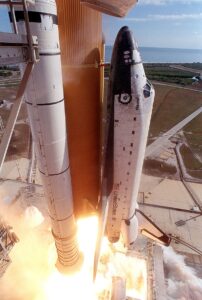 back into the reality that the Shuttle program might have some serious flaws. Still, the Space Shuttle program was a long running and highly successful program, running from 1981 to 2011. During the course of the program, a total of 135 missions were flown, all launched from Kennedy Space Center (KSC) in Florida. During that period of time, the fleet logged 1,322 days, 19 hours, 21 minutes and 23 seconds of flight time. The first orbiter built, Enterprise, was used for atmospheric flight tests (ALT) but future plans to upgrade it to orbital capability were ultimately canceled. Originally, NASA built four fully operational orbiters…Columbia, Challenger, Discovery, and Atlantis. Of course, we know that Challenger and Columbia were destroyed in mission accidents in 1986 and 2003 respectively, killing a total of fourteen astronauts. A fifth operational orbiter, Endeavour, was built in 1991 to replace Challenger. In the end, it was decided that the shuttles were getting old and had too many flaws, so the Space Shuttle was retired from service upon the conclusion of STS-135 by Atlantis on July 21, 2011.
back into the reality that the Shuttle program might have some serious flaws. Still, the Space Shuttle program was a long running and highly successful program, running from 1981 to 2011. During the course of the program, a total of 135 missions were flown, all launched from Kennedy Space Center (KSC) in Florida. During that period of time, the fleet logged 1,322 days, 19 hours, 21 minutes and 23 seconds of flight time. The first orbiter built, Enterprise, was used for atmospheric flight tests (ALT) but future plans to upgrade it to orbital capability were ultimately canceled. Originally, NASA built four fully operational orbiters…Columbia, Challenger, Discovery, and Atlantis. Of course, we know that Challenger and Columbia were destroyed in mission accidents in 1986 and 2003 respectively, killing a total of fourteen astronauts. A fifth operational orbiter, Endeavour, was built in 1991 to replace Challenger. In the end, it was decided that the shuttles were getting old and had too many flaws, so the Space Shuttle was retired from service upon the conclusion of STS-135 by Atlantis on July 21, 2011.
It was a piece of foam insulation that would bring down the Columbia shuttle. It broke off and hit the leading edge of the wing. That small little bit of damage to the wing allowed hot gases to enter the wing causing it to 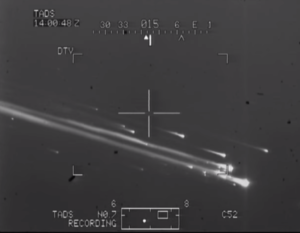 break up as the craft entered Earth’s atmosphere. During the breakup, debris and the bodies of the astronauts were strewn across the state of Texas. The breakup began over California at 8:53am, and by 8:59am, communication was lost. Mission Control began its disaster procedures at 9:12am. Lost in the disaster were Rick D Husband (Commander), William C McCool (Pilot), Michael P Anderson (Payload Commander), Ilan Ramon (Payload Specialist), Kalpana Chawla (an Indian-born aerospace engineer and a Mission Specialist), David M Brown (Mission Specialist), and Laurel Blair Salton Clark (Mission Specialist). Today, marks the 20th anniversary of that fateful day. Today, we honor those we lost.
break up as the craft entered Earth’s atmosphere. During the breakup, debris and the bodies of the astronauts were strewn across the state of Texas. The breakup began over California at 8:53am, and by 8:59am, communication was lost. Mission Control began its disaster procedures at 9:12am. Lost in the disaster were Rick D Husband (Commander), William C McCool (Pilot), Michael P Anderson (Payload Commander), Ilan Ramon (Payload Specialist), Kalpana Chawla (an Indian-born aerospace engineer and a Mission Specialist), David M Brown (Mission Specialist), and Laurel Blair Salton Clark (Mission Specialist). Today, marks the 20th anniversary of that fateful day. Today, we honor those we lost.
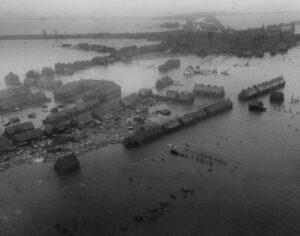
 The early warning systems we have in place these days could have easily saved many of the lives of the 2551 people who lost their lives on January 31, 1953, during the North Sea Flood. The flood caused catastrophic damage and loss of life in Scotland, England, Belgium and The Netherlands. It became one of the worst peacetime disasters of the 20th century. In the course of the flood, 307 people died in England, 19 died in Scotland, 28 died in Belgium, 1,836 died in the Netherlands, and an additional 361 people died at sea.
The early warning systems we have in place these days could have easily saved many of the lives of the 2551 people who lost their lives on January 31, 1953, during the North Sea Flood. The flood caused catastrophic damage and loss of life in Scotland, England, Belgium and The Netherlands. It became one of the worst peacetime disasters of the 20th century. In the course of the flood, 307 people died in England, 19 died in Scotland, 28 died in Belgium, 1,836 died in the Netherlands, and an additional 361 people died at sea.
The North Sea Flood of 1953 was an unusual storm, that was caused by a number of contributing elements, that combined together to make it more deadly and devastating than the average storm or even the average flood. The annual spring tides, a deep pressure system…something that in itself can cause the sea to rise, combined with severe gale force winds…recorded at 126 miles per hour at Costa Hill in Scotland and the result was the North Sea Flood of 1953. All of these elements funneled those high tides southward toward the narrow, and shallow…just 571 feet deep, English Channel, causing the swell to rise even further. The storm surge was recorded at 18.4 feet at its peak.
The tide came in slowly at first, and nobody was alarmed. The official weather forecast was a slight drizzle and strong winds but nothing regarding waves and tidal flow. Life went on as usual, the ships set sail and people went to work or to play. Yes, life went on as usual…until it didn’t. What began as a calm evening was quickly changed into a nightmare. The tide became unpredictable and surged over the sea walls at different points during the evening, taking many by surprise and leaving no time to warn others. One survivor in Norfolk said, that it took less than 15 minutes from the water first tricking into his home, to reaching almost 5 feet. Those living closest to the sea reported that a wall of water came over almost immediately with many homes collapsing instantaneously with the force of the water rushing in. There was no warning system available to them. No one knew how bad this storm was…until it was way too late. The survivors became the first responders, because there was no one else. They couldn’t communicate the emergency need, or at the very least, communication was delayed. Outside of the affected areas, the first that many knew of what had happened was many hours after the majority of people had been killed.
Following the devastation, Questions began to emerge regarding the lack of warning given to the people, and because of that, the number of deaths. Priority was given to repairing the sea walls and rebuilding the homes of the people. In the aftermath, however it was going to be the long-term flood defenses that would change the future outcomes. The Thames Barrier was designed and built following the lessons from the 1953 flood. 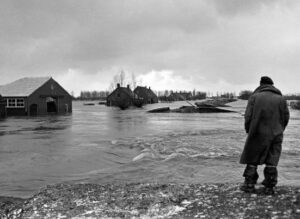
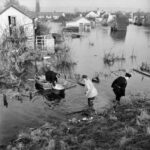 Warning sirens were put in place at the most at risk areas and are still in use today. The Dutch government quickly formed the Delta commission to study the floods and eventually commissioned the ‘Delta Works’ to enable the closing of estuaries to prevent upstream flooding and included dams, sluices, locks, dikes, levees, and barriers. Taxes were implemented and readily accepted with a national mind-set that this must never happen again. Even today, commemorations still happen on every anniversary for the dead.
Warning sirens were put in place at the most at risk areas and are still in use today. The Dutch government quickly formed the Delta commission to study the floods and eventually commissioned the ‘Delta Works’ to enable the closing of estuaries to prevent upstream flooding and included dams, sluices, locks, dikes, levees, and barriers. Taxes were implemented and readily accepted with a national mind-set that this must never happen again. Even today, commemorations still happen on every anniversary for the dead.
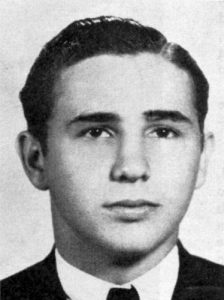
 Once upon a time, journalists and the media as a whole had an obligation to tell the truth, or at least tell the public that the story was their opinion only. The had to have reliable sources, even if they didn’t have to disclose them. While they weren’t “forced” to be truthful, they were completely shunned if they didn’t.
Once upon a time, journalists and the media as a whole had an obligation to tell the truth, or at least tell the public that the story was their opinion only. The had to have reliable sources, even if they didn’t have to disclose them. While they weren’t “forced” to be truthful, they were completely shunned if they didn’t.
When a journalist is mesmerized by someone, they can definitely fall hard for them. Such was the case with “the job-creating Führer with eyes that were like ‘blue larkspur.'” Why did so many journalists spend years dismissing the evidence of Hitler’s atrocities? Some, like the Christian Science Monitor called Hiter’s effect on Germany as providing “a dark land a clear light of hope.” They talked about how smoothly things were running, how well regulated everything was, and how great the police uniforms were. Strangely, when it came to the killing of the Jewish people, they said things like, “I have so far found quietness, order, and civility;” there was “not the slightest sign of anything unusual afoot.” As for all those “harrowing stories” of Jews being mistreated…they seemed to apply “only to a small proportion;” most were “not in any way molested.” They made it seem like as long as the number were “low,” the problem couldn’t possibly be a big one. Well, the reality as we all know now is that the “problem” was enormous, heinous, and horrific beyond imagination.
Trusting the journalists implicitly, without doing your own research is a very dangerous plan. Journalists have been known to assist in “hiding the evidence” in a matter…as we have seen in recent years. I don’t believe that all journalists are “bad” people, but those that are “bad” people ruin the reputation of journalism for every good journalist. I’m not even sure I would call some of the media, journalists. They are truly just “bad fiction writers,” in my opinion. Anyone who covers up the truth in the name of free speech or forces others to hide the truth in the name of tolerance is a bad journalist.
Many in the American mainstream newspaper industry portrayed the Hitler regime positively, especially in its 
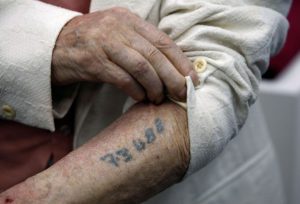 early months. Looking back now, we wonder how they could have said the good things they said about such a horrible dictator. The media published warm human-interest stories about Hitler, while simply excusing or rationalizing Nazi anti-Semitism. These actions should haunt the conscience of United States Journalism to this day. There was no excuse for what Hitler did, and to write it off as “not so bad” was absolutely inexcusable.
early months. Looking back now, we wonder how they could have said the good things they said about such a horrible dictator. The media published warm human-interest stories about Hitler, while simply excusing or rationalizing Nazi anti-Semitism. These actions should haunt the conscience of United States Journalism to this day. There was no excuse for what Hitler did, and to write it off as “not so bad” was absolutely inexcusable.
Of course, not all of the “bad journalism” of the day was sinister. Hitler was an unfamiliar subject when he first appeared on the international scene. His ideals and his movement were unknown, and so could have been mistaken for something quite innocent…at first. The Nazis had risen from barely 18 percent of the national vote in mid-1930 to become Germany’s largest party only two years later and gained power just months after that. I suppose that the political rise of Hitler could have just seemed like someone with great ideas stepping up to the microphone. It is thought that many American editors and reporters erroneously assumed, based on previous experience, that a radical candidate would show some restraint once in office, but that was not Hitler’s plan. He planned to take over the world…to become a One World Government. Really, any time anyone tries to take away the sovereignty of a country, they are not acting in the best interest of that country. That is something we must never forget.
An editorial in the Philadelphia Evening Bulletin on January 30, 1933, asserted that “there have been indications of moderation” on Hitler’s part. The editors of The Cleveland Press, on January 31, 1933, claimed the 
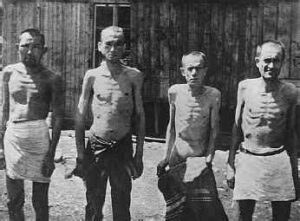 “appointment of Hitler as German chancellor may not be such a threat to world peace as it appears at first blush.” Frederick Birchall, Berlin bureau chief for The New York Times, found “a new moderation” in the political atmosphere following Hitler’s rise to power. Unfortunately, all of them were dead wrong!! Hitler was not a moderate. He was, in fact, more of a threat than they could ever have imagined. Hitler was the epitome of evil, and like it or not, any journalist who softened the story, was guilty of hiding the evidence.
“appointment of Hitler as German chancellor may not be such a threat to world peace as it appears at first blush.” Frederick Birchall, Berlin bureau chief for The New York Times, found “a new moderation” in the political atmosphere following Hitler’s rise to power. Unfortunately, all of them were dead wrong!! Hitler was not a moderate. He was, in fact, more of a threat than they could ever have imagined. Hitler was the epitome of evil, and like it or not, any journalist who softened the story, was guilty of hiding the evidence.
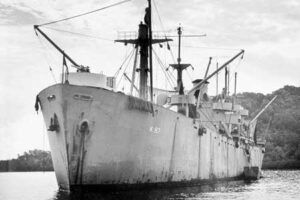 The ship that would eventually become the USS Serpens was built by California Shipbuilding Corporation in Wilmington, California. The ship was laid down March 10, 1943, as EC2 class Liberty Ship that was initially named SS Benjamin N. Cardozo (MCE hull 739). In the course of a little more than a month, SS Cardozo was transferred to the US Navy (USN) on April 19, 1943, and renamed USS Serpens (AK-97) after the star constellation Serpens. USS Serpens was commissioned May 28, 1943, at San Diego, and assigned to Captain Magnus J. Johnson, USCGR and manned by a crew from the US Coast Guard (USCG). From there, the ship led a relatively normal “life” for a ship. At least until the evening of January 29, 1945, when the USS Serpens (AK 97) was anchored off Lunga Beach, Guadalcanal, Solomon Islands. The Commanding Officer, Lieutenant Commander Perry L Stinson, and some of the enlisted men were ashore performing administrative functions.
The ship that would eventually become the USS Serpens was built by California Shipbuilding Corporation in Wilmington, California. The ship was laid down March 10, 1943, as EC2 class Liberty Ship that was initially named SS Benjamin N. Cardozo (MCE hull 739). In the course of a little more than a month, SS Cardozo was transferred to the US Navy (USN) on April 19, 1943, and renamed USS Serpens (AK-97) after the star constellation Serpens. USS Serpens was commissioned May 28, 1943, at San Diego, and assigned to Captain Magnus J. Johnson, USCGR and manned by a crew from the US Coast Guard (USCG). From there, the ship led a relatively normal “life” for a ship. At least until the evening of January 29, 1945, when the USS Serpens (AK 97) was anchored off Lunga Beach, Guadalcanal, Solomon Islands. The Commanding Officer, Lieutenant Commander Perry L Stinson, and some of the enlisted men were ashore performing administrative functions.
The remaining 970 crew members were loading depth charges when the USS Serpens suddenly exploded, leaving only the bow of the ship visible. The explosion was devastating, and only two sailors aboard…SN 1/C Kelsie K Kemp and SN 1/C George S Kennedy survived by clinging to the bow section of the ship, after escaping 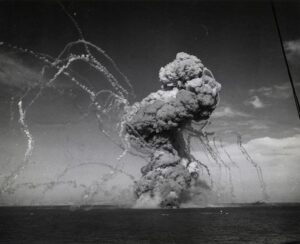 from the “bosun’s hole” inside the ship. The rest of the crew consisting of 198 Coast Guardsmen, 56 US Army stevedores, and Dr Levin, a US Public Health Service surgeon, died…most instantly. Of the 198 US Coast Guardsmen, 167 were reservists. In the immense explosion, nearby ships were damaged, and a US Army soldier on the beach was killed. The loss of the USS Serpens remains the largest single disaster ever suffered by the Coast Guard.
from the “bosun’s hole” inside the ship. The rest of the crew consisting of 198 Coast Guardsmen, 56 US Army stevedores, and Dr Levin, a US Public Health Service surgeon, died…most instantly. Of the 198 US Coast Guardsmen, 167 were reservists. In the immense explosion, nearby ships were damaged, and a US Army soldier on the beach was killed. The loss of the USS Serpens remains the largest single disaster ever suffered by the Coast Guard.
An eyewitness account of the disaster stated that, “As we headed our personnel boat shoreward the sound and concussion of the explosion suddenly reached us, and, as we turned, we witnessed the awe-inspiring death drams unfold before us. As the report of screeching shells filled the air and the flash of tracers continued, the water splashed throughout the harbor as the shells hit. We headed our boat in the direction of the smoke and as we came into closer view of what had once been a ship, the water was filled only with floating debris, dead fish, torn life jackets, lumber and other unidentifiable objects. The smell of death, and fire, and gasoline, and oil was evident and nauseating. This was sudden death, and horror, unwanted and unasked for, but complete.”
The Coast Guard initially though the explosion was an enemy attack. They actually continued to think that until 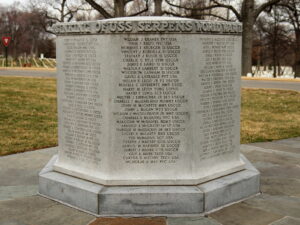 July 1947. By June 10, 1949, it was officially determined not to have been the result of enemy attack. Unfortunately, there would be no real answers as to what happened. The remains of the 250 men who lost their lives were originally buried at the Army, Navy, and Marine Cemetery in Guadalcanal with full military honors and religious services. Later, however, the remains were repatriated under the program for the return of World War II dead in 1949. The mass recommittal of the 250 unidentified dead took place in section 34 at MacArthur Circle, Arlington National Cemetery. The remains were placed in 52 caskets and buried in 28 graves near the intersection of Jesup and Grant Drives. The two survivors both earned the Purple Heart injuries sustained.
July 1947. By June 10, 1949, it was officially determined not to have been the result of enemy attack. Unfortunately, there would be no real answers as to what happened. The remains of the 250 men who lost their lives were originally buried at the Army, Navy, and Marine Cemetery in Guadalcanal with full military honors and religious services. Later, however, the remains were repatriated under the program for the return of World War II dead in 1949. The mass recommittal of the 250 unidentified dead took place in section 34 at MacArthur Circle, Arlington National Cemetery. The remains were placed in 52 caskets and buried in 28 graves near the intersection of Jesup and Grant Drives. The two survivors both earned the Purple Heart injuries sustained.

 Tragedy never really goes away. Of course, it forever stays with the families of the lost, but some tragedies leave us with deeper feelings than other tragedies. Some tragedies touch our very core. Of course, those tragedies are the kind that are known, and felt, around the world. Like every national tragedy, we remember where we were when we first heard about the Challenger Disaster. Nasa had been losing its draw to a degree, but this mission was to be the first time a civilian would go up in space, and NASA had chosen a teacher for that all important mission. Her name was Christa McAuliffe. Of course, she was only one member of that tragic mission, and truly no more or less important than any of the others. These people had worked hard to become a team. The names of the rest of the crew were Dick Scobee (Commander), Michael J Smith (Pilot), Ronald McNair (Mission Specialist), Ellison Onizuka (Mission Specialist), Judith Resnik (Mission Specialist), and Gregory Jarvis (Payload Specialist).
Tragedy never really goes away. Of course, it forever stays with the families of the lost, but some tragedies leave us with deeper feelings than other tragedies. Some tragedies touch our very core. Of course, those tragedies are the kind that are known, and felt, around the world. Like every national tragedy, we remember where we were when we first heard about the Challenger Disaster. Nasa had been losing its draw to a degree, but this mission was to be the first time a civilian would go up in space, and NASA had chosen a teacher for that all important mission. Her name was Christa McAuliffe. Of course, she was only one member of that tragic mission, and truly no more or less important than any of the others. These people had worked hard to become a team. The names of the rest of the crew were Dick Scobee (Commander), Michael J Smith (Pilot), Ronald McNair (Mission Specialist), Ellison Onizuka (Mission Specialist), Judith Resnik (Mission Specialist), and Gregory Jarvis (Payload Specialist).
We all think we know what happened that fateful day…an explosion, right? Not exactly. Just 73 seconds after liftoff, the space shuttle was engulfed in what is now being called a cloud of fire, at an altitude of 46,000 feet. It looked like an explosion, the media called it an explosion, and even NASA officials mistakenly described it that way initially. Nevertheless, the reality is that in fact, there was no detonation or explosion…at least not in the way we understand an explosion to be. Actually, a seal, manufactured years before the launch, in the shuttle’s right solid-fuel rocket booster designed to prevent leaks from the fuel tank during liftoff weakened in the frigid temperatures in Florida that day. When the seal failed, hot gas began pouring through the leak. Instead of exploding, the fuel tank actually collapsed and tore apart, and the resulting flood of liquid oxygen and hydrogen created the huge fireball believed by many to be an explosion, but it was actually just a fire.
The Challenger didn’t disintegrate right away. In fact, it remained momentarily intact and actually continued moving upwards with its forward momentum. Then, as it shot forward, powerful aerodynamic forces actually pulled the orbiter apart. The pieces…including the crew cabin…reached an altitude of about 65,000 feet before losing its momentum and falling out of the sky into the Atlantic Ocean below. At that point, the crew, who had most likely survived the initial breakup of the shuttle, was unconscious due to loss of cabin pressure and probably died due to oxygen deficiency pretty quickly. The cabin hit the water’s surface traveling at speeds of more than 200 miles per hour. It hit the water a full 2 minutes and 45 seconds after the shuttle broke apart. No one knows if the crew might have regained consciousness in the final few seconds of the fall, and I certainly hope that is not the case. I would much rather that they had no idea what was coming, and if they were awake, they certainly would have known. We will never know, of course.
Salvage operations began immediately, and I’m sure that they hoped against hope to be able to find some of the crew still alive. Within a day of the shuttle tragedy, salvage operations had recovered hundreds of pounds of metal from the Challenger. As hopes turned to sad resolve, the salvage operation continued. They kept looking and finally in March 1986, the remains of the astronauts were found in the debris of the crew cabin. By the time NASA closed its Challenger investigation in 1986, all of the important pieces of the shuttle were retrieved. Nevertheless, most of the spacecraft remained in the Atlantic Ocean, where I’m sure, they thought it would remain. Then, a decade later, eerie memories of the disaster resurfaced when two large pieces of the Challenger washed up in the surf at Cocoa Beach, about 20 miles south of the Kennedy Space Center at Cape Canaveral. NASA believed the two barnacle-encrusted fragments came from the shuttle’s left wing flap. It is 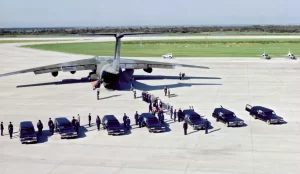
 thought that the two pieces were once connected. One piece measured more than 6 feet wide and 13 feet long. Once they were officially verified, the pieces of Challenger were placed in two abandoned missile silos with the other shuttle remains, which number around 5,000 pieces and weigh in at some 250,000 pounds.
thought that the two pieces were once connected. One piece measured more than 6 feet wide and 13 feet long. Once they were officially verified, the pieces of Challenger were placed in two abandoned missile silos with the other shuttle remains, which number around 5,000 pieces and weigh in at some 250,000 pounds.

 This past year has been one filled with excitement, change, and growth for my niece, Lacey Stevens. Lacey, who is a hairdresser, opened her own salon. It’s called LuxLou Beauty Salon, and her business is really growing. Most of her family and friends go to Lacey regularly…not to mention the new people who have been referred to her. Lacey not only does people’s hair for their everyday life, but she also specializes in hair and makeup for their weddings, which as we all know is the most important day in a girl’s life. You want the best for that special day, and Lacey is an expert in providing the very best look for that all-important day. Lacey is very good at what she does, and she listens to her clients, to make sure she does exactly as the want it to be. Going forward, I know that Lacey’s business will only grow bigger and bigger.
This past year has been one filled with excitement, change, and growth for my niece, Lacey Stevens. Lacey, who is a hairdresser, opened her own salon. It’s called LuxLou Beauty Salon, and her business is really growing. Most of her family and friends go to Lacey regularly…not to mention the new people who have been referred to her. Lacey not only does people’s hair for their everyday life, but she also specializes in hair and makeup for their weddings, which as we all know is the most important day in a girl’s life. You want the best for that special day, and Lacey is an expert in providing the very best look for that all-important day. Lacey is very good at what she does, and she listens to her clients, to make sure she does exactly as the want it to be. Going forward, I know that Lacey’s business will only grow bigger and bigger.
While her business is really big news, the most exciting news is that Lacey got engaged to her boyfriend, Chris Killinger just before Christmas. These two are perfect for each other, and Lacey is already a wonderful stepmom to Chris’ two kids, Brooklyn and Jaxon. They love her and our whole family, and we all love them. While many 
 people might think that having a “ready-made family” would be tough, Lacey has embraced it and truly considers Chris’ kids her own. That is as it should be. When you marry a person with children, you marry the whole family. The best stepparents know and embrace that, and it helps that Brooklyn and Jaxon are very sweet. Lacey also has a soft heart, and she is very loving to children, so it’s a blessing to all.
people might think that having a “ready-made family” would be tough, Lacey has embraced it and truly considers Chris’ kids her own. That is as it should be. When you marry a person with children, you marry the whole family. The best stepparents know and embrace that, and it helps that Brooklyn and Jaxon are very sweet. Lacey also has a soft heart, and she is very loving to children, so it’s a blessing to all.
Lacey has been helping Chris with updates to their house. They have been painting, and they also updated the bathroom, which turned out great. This is somewhat new to Lacey, but she is always willing to learn new things and help him with improvements to their home. It’s always fun to watch the changes that people go through as they blend their lives. What one person knows and has done, the other might not have, but when you blend them together, each can teach the other something new…be it a skill or a style.
Now that they are engaged, Lacey and Chris are very busily planning their wedding, scheduled for October. I know it is going to be as beautiful as these two are, and we are all very excited for them. I guess Lacey won’t need to hire someone to do her makeup, because she is the best person for the job. Her own hair and makeup always look perfectly stunning, so unless she just wants to be pampered, why go elsewhere. Of course, we don’t know any of the other details of the wedding plans, and that is as it should be, but I know it will be 

 perfect, and I am very happy for these two. Today is Lacey’s 30th birthday. It’s the perfect time for Lacey to begin the next chapter of her life, but I can’t believe she isn’t a little girl of 3. Where has the time gone. Happy birthday Lacey!! Have a great day!! We love you!!
perfect, and I am very happy for these two. Today is Lacey’s 30th birthday. It’s the perfect time for Lacey to begin the next chapter of her life, but I can’t believe she isn’t a little girl of 3. Where has the time gone. Happy birthday Lacey!! Have a great day!! We love you!!
 My husband, Bob’s aunt, Margee Kountz is a strong woman, who has made her own way most of her life. She is a single mom who raised her two kids, Dan and Sandy Kountz almost completely by herself, and then as a hands-on grandmother helped with her grandchildren, Brian Kountz (now in Heaven), Zech Kountz, Nathan Avey, Stasi Smith, and Destreyia Cannon whenever she was needed. She was and remains very close to her grandchildren. With the loss of their mother, Margee’s daughter-in-law, Darlene Kountz, Margee stepped in an helped raise two of her grandchildren, as well as
My husband, Bob’s aunt, Margee Kountz is a strong woman, who has made her own way most of her life. She is a single mom who raised her two kids, Dan and Sandy Kountz almost completely by herself, and then as a hands-on grandmother helped with her grandchildren, Brian Kountz (now in Heaven), Zech Kountz, Nathan Avey, Stasi Smith, and Destreyia Cannon whenever she was needed. She was and remains very close to her grandchildren. With the loss of their mother, Margee’s daughter-in-law, Darlene Kountz, Margee stepped in an helped raise two of her grandchildren, as well as 
helping with the other three often. The grandchildren are all very close to her today, and they help her as needed now too.
Hands-on grandparents are really a vital part of the village that it takes to raise kids in a world where both parents often must work to make ends meet. Plus, let’s face it, kids love to go to grandma’s house. Things are always more fun there. Grandmas have the best treats and let the kids get away with more stuff too. The old saying, “What happens at Grandma’s…stays at Grandma’s” has always been my motto. And I think Margee felt the same way. Don’t get me wrong. Most grandmas aren’t afraid of the occasional disciplinary action, but Mommy and Daddy don’t have to hear about every little infraction of the rules committed by their little darlings either. That’s what makes Grandma’s house so great to visit.
Margee is the youngest of her parents, Bob and Nettie Knox’ children, and the only one still with us today. She  could always be counted on to help me when Bob’s mom, her sister, Joann Schulenberg had Alzheimer’s Disease, and couldn’t be left alone. I was the main caregiver for Bob’s parents, and when it came time for Dad’s doctor’s appointment, Margee would sit with Mom, so I didn’t have to take them both to the appointment. It was a huge help, and one for which I will always be grateful. Mom loved having Margee come for visits, even though she seldom remembered that she had been there once the visit was over. That fact didn’t matter anyway. Margee knew that she had been there, and Mom enjoyed the visits during the visits. That was the main thing. Margee’s caring nature has endeared her to me forever. Today is Margee’s 74th birthday. Happy birthday Margee!! Have a great day!! We love you!!
could always be counted on to help me when Bob’s mom, her sister, Joann Schulenberg had Alzheimer’s Disease, and couldn’t be left alone. I was the main caregiver for Bob’s parents, and when it came time for Dad’s doctor’s appointment, Margee would sit with Mom, so I didn’t have to take them both to the appointment. It was a huge help, and one for which I will always be grateful. Mom loved having Margee come for visits, even though she seldom remembered that she had been there once the visit was over. That fact didn’t matter anyway. Margee knew that she had been there, and Mom enjoyed the visits during the visits. That was the main thing. Margee’s caring nature has endeared her to me forever. Today is Margee’s 74th birthday. Happy birthday Margee!! Have a great day!! We love you!!
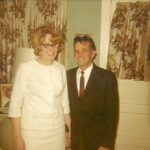
 My husband, Bob’s uncle, Bobby Cole was a fun-loving person who always made people around him laugh. It wasn’t so much that Bobby told a lot of jokes or played a lot of pranks, but more that he liked to laugh and found a lot of things funny. His laugh was an infectious one, and so you found yourself laughing too. I think that was what made going for visits to Kennebec, South Dakota pleasant enough to make it an annual tradition…at least until they moved to Winnemucca, Nevada, which was a little too far to go for just a few days. The trips to Kennebec were inexpensive enough for a young family like ours, because Bobby, and Bob’s aunt, Linda Cole owned the only hotel in that “podunk” town, so there was nothing to spend money on, other than the contribution to the meals. I don’t recall a restaurant, although there might have been one up by the interstate, which was the only reason anyone would actually go through Kennebec. Mostly we would head up to the tiny market to stock up on snacks and meal items for the three or four days we would be there, and then head back to the hotel, where we had a room upstairs to sleep, when we weren’t gathered downstairs in their apartment to play cards or just visit.
My husband, Bob’s uncle, Bobby Cole was a fun-loving person who always made people around him laugh. It wasn’t so much that Bobby told a lot of jokes or played a lot of pranks, but more that he liked to laugh and found a lot of things funny. His laugh was an infectious one, and so you found yourself laughing too. I think that was what made going for visits to Kennebec, South Dakota pleasant enough to make it an annual tradition…at least until they moved to Winnemucca, Nevada, which was a little too far to go for just a few days. The trips to Kennebec were inexpensive enough for a young family like ours, because Bobby, and Bob’s aunt, Linda Cole owned the only hotel in that “podunk” town, so there was nothing to spend money on, other than the contribution to the meals. I don’t recall a restaurant, although there might have been one up by the interstate, which was the only reason anyone would actually go through Kennebec. Mostly we would head up to the tiny market to stock up on snacks and meal items for the three or four days we would be there, and then head back to the hotel, where we had a room upstairs to sleep, when we weren’t gathered downstairs in their apartment to play cards or just visit.
Kennebec wasn’t a place where Bobby and Linda would become millionaires or anything, but it was somewhat close to his family, and family ties are something that often keeps people in an area beyond the financial viability of the lifestyle. Nevertheless, the cost of living in the area was very low too, so they made a comfortable living, and the laid-back lifestyle suited them. It wasn’t that there was nothing to do in Kennebec, because there was. Bobby and Linda were in a square dance club, and they actually traveled around the area going to square dances, complete with the fancy costumes that are common to the old-fashioned dance they loved. These days, I don’t think square dance clubs even exist anymore, although I could be wrong. Maybe they still do in small-town America…who knows. Once they moved to Winnemucca, I never really heard of them 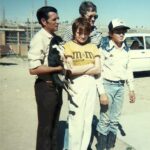
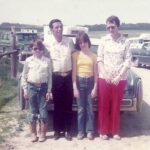 going to square dances anymore or anywhere else, so maybe it was just a South Dakota thing.
going to square dances anymore or anywhere else, so maybe it was just a South Dakota thing.
I miss those old days of visiting Bobby and Linda, even though it has been many years now since we last went to Kennebec…or to Winnemucca, for that matter. Bobby passed away on May 30, 2014, and Linda on September 22, 2016. It’s hard to believe they have both been in Heaven for so long now. Today would have been Bobby’s 80th birthday. Happy birthday in Heaven, Bobby. We love and miss you very much.
 We have all heard of stunt doubles. They are the people who make the shows we watch seem fearless as they perform their daring feats and even some that aren’t really so daring, but they just don’t want their actors scratched. Somehow these people, at least at a distance look just like the actor they are supposed to be. Sometimes they are very close, as in the case of brothers, David Paul Olsen, who is the stunt double for his brother, Eric Christian Olsen on NCIS Los Angeles. They aren’t twins, but the brothers loo enough alike to pull it off during filming.
We have all heard of stunt doubles. They are the people who make the shows we watch seem fearless as they perform their daring feats and even some that aren’t really so daring, but they just don’t want their actors scratched. Somehow these people, at least at a distance look just like the actor they are supposed to be. Sometimes they are very close, as in the case of brothers, David Paul Olsen, who is the stunt double for his brother, Eric Christian Olsen on NCIS Los Angeles. They aren’t twins, but the brothers loo enough alike to pull it off during filming.
While this is common, there is another type of “double” that is just as often used and is much less known. Government officials such as presidents, kings, and even congress or parliament members have been known to use doubles so that they can travel safely without worrying about being assassinated. Strangely, these doubles are very often denied. We are told that we are imagining things, but when we take a moment to look closely, the differences are obvious. This has gone on throughout history, although probably not as easily as the more recent history.

Sometimes the double goes to extremes, such as plastic surgery, but my guess is that with the more recent ability to make life-like masks, the need for such extreme measures has lessened. Still, anyone who is awake knows that doubles are and likely will always be used to protect or hide that elites who feel the need to move in relative anonymity. The possibilities are endless really. Having a double could mask a death of a high ranking official, such as, it has been believed, Kim Jong-Un, who has been seen looking heavy and then a short time later, thinner, when it would be impossible for him to have lost the weight so quickly. They can deny it all they want to, but when you look at things that are harder to change, like ear lobes, chins, and even teeth that seem to go back and forth from chipped to not chipped. No body double or stunt double is going to be a perfect match, even with plastic surgery. Facial shape and bone structure are going to have slight differences…even in  identical twins…which could be the easiest body double to use, if the twin is not the “important” person his or her sibling is. How awesome would that be to face up to? “Yes, I’m my brother’s body double, because I am expendable.” Right!! How wonderful would that feel for the non-important twin?
identical twins…which could be the easiest body double to use, if the twin is not the “important” person his or her sibling is. How awesome would that be to face up to? “Yes, I’m my brother’s body double, because I am expendable.” Right!! How wonderful would that feel for the non-important twin?
We can argue that some of our prominent politicians these days have body doubles, or we can “stick our heads in the sand” and believe that they don’t, but the reality is that if you look closely, you will see that they very likely do have a double. With the internet, and the multitude of pictures taken of a politician every day, it becomes more and more difficult to deny what is right there in front of our eyes. It up to us to decide to believe what we are told or search out the truth.

 Many of us have seen shows about a spacecraft that got lost in space and is seen wandering around trying to make their way back. Of course, those shows are fiction, but if you were going to explore beyond our galaxy, you would most likely need to send some sort of probe or spaceship out into the far reaches of space to see what it’s like out there. If the empty probe can’t function out there, it’s very likely not a good idea to send a manned spaceship out there. That is what Nasa figured anyway, and so in 1972, Pioneer 10…originally designated Pioneer F, was launched into space. Pioneer 10 is an American space probe, manufactured by TRW Inc. It isn’t overly heavy, weighing just 569 pounds. Its first mission to the planet Jupiter was completed with its closest approach happening on Dec 3, 1973. At that point, Pioneer 10 became the first of five artificial objects to achieve the escape velocity needed to leave the Solar System. At that point, it became part of a space exploration project that was conducted by the NASA Ames Research Center in California.
Many of us have seen shows about a spacecraft that got lost in space and is seen wandering around trying to make their way back. Of course, those shows are fiction, but if you were going to explore beyond our galaxy, you would most likely need to send some sort of probe or spaceship out into the far reaches of space to see what it’s like out there. If the empty probe can’t function out there, it’s very likely not a good idea to send a manned spaceship out there. That is what Nasa figured anyway, and so in 1972, Pioneer 10…originally designated Pioneer F, was launched into space. Pioneer 10 is an American space probe, manufactured by TRW Inc. It isn’t overly heavy, weighing just 569 pounds. Its first mission to the planet Jupiter was completed with its closest approach happening on Dec 3, 1973. At that point, Pioneer 10 became the first of five artificial objects to achieve the escape velocity needed to leave the Solar System. At that point, it became part of a space exploration project that was conducted by the NASA Ames Research Center in California.
“Pioneer 10 was assembled around a hexagonal bus with a 9-foot diameter parabolic dish high-gain antenna, and the spacecraft was spin stabilized around the axis of the antenna. Its electric power was supplied by four radioisotope thermoelectric generators that provided a combined 155 watts at launch. Pioneer was launched on March 2, 1972, by an Atlas-Centaur expendable vehicle from Cape Canaveral, Florida. Between July 15, 1972, and February 15, 1973, it became the first spacecraft to traverse the asteroid belt. Photography of Jupiter began November 6, 1973, at a range of 16,000,000 miles, and about 500 images were transmitted. The closest approach to the planet was on December 4, 1973, at a range of 82,178 miles. During the mission, the on-board instruments were used to study the asteroid belt, the environment around Jupiter, the solar wind, cosmic rays, and eventually the far reaches of the Solar System and heliosphere.”
I find it hard to believe that Nasa thought that the spacecraft would last as long as it did, but I suppose that the further out it went in space, the less it would encounter the kind of space debris that came from Earth. Still, there are meteors and planets, stars that it could be pulled into, and so many more things that could have meant the destruction if the craft. Nevertheless, Pioneer 10 continued to send out radio transmissions continued between Nasa and itself until January 23, 2003, and then only because of the loss of electric power for its radio transmitter. At that point, the probe was at a distance of 12 billion kilometers (7,456,454,306.848 miles) from Earth. 

According to sources, “If left undisturbed, Pioneer 10 and its sister craft Pioneer 11 will join the two Voyager spacecraft and the New Horizons spacecraft in leaving the Solar System to wander the interstellar medium. The Pioneer 10 trajectory is expected to take it in the general direction of the star Aldebaran, currently located at a distance of about 68 light years. If Aldebaran had zero relative velocity, it would require more than two million years for the spacecraft to reach it. Well before that, in about 90,000 years, Pioneer 10 will pass about 0.23 parsecs (0.75 light-years) from the late K-type star HIP 117795. This is the closest stellar flyby in the next few million years of all the four Pioneer and Voyager spacecrafts, which are leaving the Solar System.”

